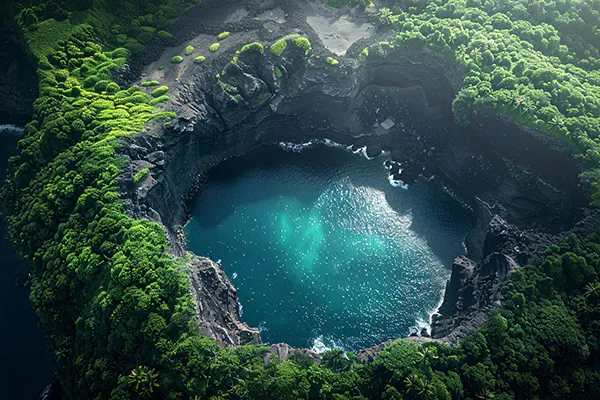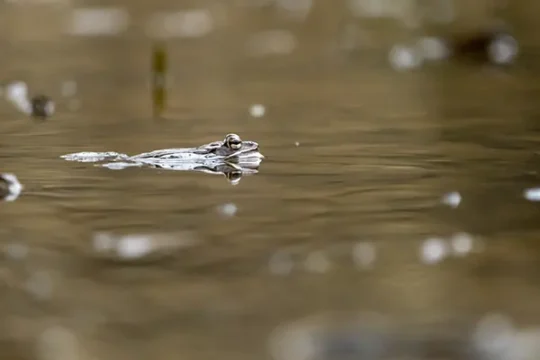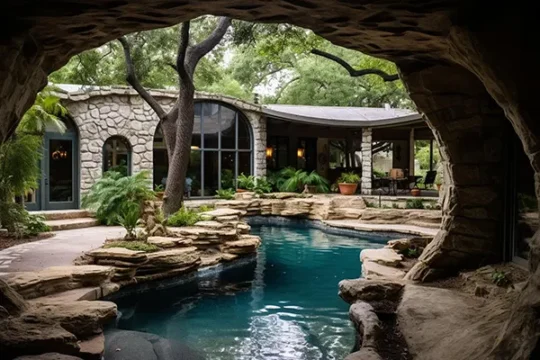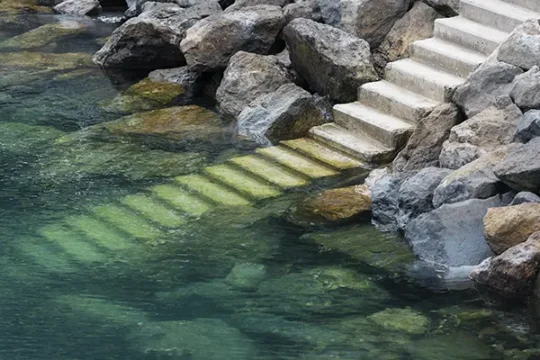TABLE OF CONTENTS
Natural rock pools represent some of Earth’s most stunning geological formations. Unlike typical resort pools with lane dividers and artificial edges, these formations result from centuries—sometimes millennia—of natural processes. Ocean waves carving stone, volcanic activity creating barriers, or tectonic shifts opening underwater caves all contribute to these remarkable swimming destinations.
These six famous rock pools span four continents, each showcasing different geological processes and unique characteristics. Understanding what makes them special provides appreciation for natural beauty and inspiration for recreating similar aesthetics closer to home.
Giola Lagoon: Greece’s Hidden Gem
Thasos, a Greek island less touristy than Mykonos or Santorini, hosts Giola Lagoon along its rugged coastline. This natural pool carved into coastal rocks offers a swimming experience unlike conventional beaches. The formation measures approximately 20 meters wide, surrounded by limestone cliffs that provide the only entry method—jumping.
The relative remoteness keeps crowds manageable compared to Greece’s more famous destinations. This preservation of natural character makes Giola particularly appealing to travelers seeking authentic experiences rather than commercialized tourist spots.
The Natural Architecture of Giola
Limestone formations around Giola create natural stepped levels. These aren’t constructed platforms—they’re erosion patterns where softer limestone layers wore away faster than harder strata. Some sections are wide enough for sunbathing. Others form narrow ledges where swimmers sit with legs dangling in water.
Limestone’s relative softness compared to granite explains the smooth, polished surfaces in high-contact areas. Wave action over approximately a thousand years created these refined edges while leaving outer rocks rougher. The timescale involved in forming these features is remarkable when considering the visible results.
Water Temperature and Conditions
Giola’s water runs warmer than surrounding open sea. The shallow, enclosed space with full sun exposure creates comfortable swimming conditions. During summer months, temperatures typically reach 23-25°C (73-77°F)—warm enough for extended swimming without discomfort.
The sandy bottom adds to comfort levels. Unlike rocky swimming holes requiring constant vigilance to avoid sharp edges, Giola allows relaxed swimming. Visitors commonly spend over an hour in the water, indicating genuinely pleasant conditions rather than just brief photo opportunities.
Getting to This Thasos Treasure
Reaching Giola requires approximately 15 minutes hiking over rocky terrain after driving to the trailhead. The path isn’t extensively marked, and Greek summer heat makes the journey challenging. Appropriate footwear is essential—flip-flops won’t suffice for the uneven rocky approach.
This accessibility barrier naturally limits visitor numbers. Arrivals typically encounter 10-15 other swimmers maximum, sometimes fewer during early morning hours. The relative solitude enhances the experience of discovering something special rather than joining tourist crowds.
To Sua Ocean Trench: Samoa’s Aquatic Wonder
To Sua translates to “big hole”—accurate but understated. This swimming destination drops 30 meters straight down into the earth. The opening, surrounded by tropical vegetation, reveals impossibly blue water at the bottom visible from above.
Access requires descending a long ladder—secure despite appearing precarious in photographs. The pool connects to the ocean through underwater caves, ensuring constant fresh water circulation. The cave-like atmosphere creates feelings of swimming in hidden grottos rather than typical outdoor pools.
Piscina das Marés: Where Architecture Meets Ocean
Piscina das Marés near Porto, Portugal represents human design working with natural formations. In the 1960s, architect Álvaro Siza Vieira carved two pools into existing coastal rock formations. Rather than imposing obviously artificial structures, the design follows natural contours.
The result feels like permanent landscape features rather than recent additions. During high tide, Atlantic waves crash over pool edges, dramatically refilling them. Low tide creates calm swimming conditions with unobstructed ocean views. The complex now holds national monument status, attracting visitors for architectural appreciation even beyond swimming opportunities.
Queen’s Bath: Hawaii’s Tidal Masterpiece
Queen’s Bath on Kauai requires careful consideration of conditions before visiting. During summer months, this tidal pool in lava rock provides relatively safe swimming where ocean water spills in naturally. Fish swim through regularly, sometimes sea turtles appear. The setting is beautiful.
Winter swells transform Queen’s Bath completely. What seems tranquil becomes dangerous within minutes when large waves arrive. Fatal accidents have occurred here. Checking surf reports, consulting locals, and exercising sound judgment are essential. The photographs don’t justify risking safety—seasonal timing matters critically for safe visits.
Havasu Falls Pools: Arizona’s Desert Oasis
Havasu Falls requires significant effort to experience. Located in the Grand Canyon on Havasupai tribal land, access involves a 20-mile round trip hike through desert terrain. Additionally, permits sell out months in advance as the tribe limits access for area protection.
The reward justifies the effort. Bright turquoise water—unusually vivid coloring from dissolved minerals—fills pools surrounded by red canyon walls. These same minerals create dramatic rock formations around pool edges. The striking color contrast against desert landscape creates a memorable visual impact. Swimming in these pools after the demanding hike provides profound satisfaction many visitors describe as transformative experiences.
Porto Moniz: Madeira’s Volcanic Swimming Paradise
Porto Moniz on Madeira’s coast demonstrates what volcanic lava creates by meeting ocean water. Cooled lava formed natural barriers and pools that Atlantic waves constantly fill with fresh seawater. The complex spans approximately 3,800 square meters with varying pool depths.
Infrastructure provides safe access through walkways and proper entry points while maintaining natural character. The volcanic rock remains black and jagged—no attempts to create artificial resort aesthetics. The contrast between dark stone and blue water creates striking visual effects, particularly during late afternoon light. Madeira’s mild year-round climate allows swimming even in January for those inclined.
Bringing Natural Beauty to Your Backyard
These six famous rock pools exist because of specific geological conditions developing over extensive timeframes. They’re special partly because they’re rare—not easily replicated through natural processes in human lifespans.
However, their aesthetic appeal and swimming experience can inspire residential pool designs. While actual geological processes can’t be rushed, modern artificial rock technology recreates the look and feel of natural stone formations. Custom rock pool features provide natural stone aesthetics without waiting millennia for erosion.
Southern California homeowners increasingly choose natural rock pool designs that evoke these famous formations. Professional artificial rock pool services create custom features—waterfalls, grottos, natural edges—that capture the essence of these geological wonders. The result transforms standard rectangular pools into environments reminiscent of these global destinations, accessible daily in your own backyard.
Quality artificial rock work doesn’t attempt to fool anyone into thinking it’s natural. Instead, it honors natural formations through thoughtful design that captures their spirit. When executed well, these installations provide similar sensory experiences—the sound of water over stone, visual interest from natural textures, the feeling of swimming in unique environments rather than typical pools.
Ready to explore possibilities for bringing natural rock pool aesthetics to your Orange County property? Contact us to discuss how custom rock features can transform your pool into something extraordinary, inspired by the world’s most beautiful natural formations.




